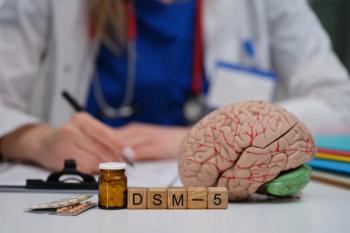
- Vol 42, Issue 1
Treating Our Young Patients: Psychotropic and Combination Therapies in the Youth
Key Takeaways
- Adolescents with behavioral disorders often receive psychotropic medications early, with many used off-label, highlighting the need for effective treatment strategies.
- A holistic, biopsychosocial approach is crucial in differentiating between normative behaviors and psychopathologies, considering developmental milestones and environmental stressors.
Check out the top 5 best practice recommendations for treating children and adolescents with psychotropic and combination therapies.
SPECIAL REPORT: BEST PRACTICES
Adolescents and young adults with emotional and behavioral disorders are more likely to be prescribed psychotropic medications at an early age. As a result, caregivers and mental health clinicians are interested in finding effective mental health treatments that can help the youth and quickly stop disruptive behaviors before they become chronic, disabling, and intractable. These behaviors are particularly challenging for caregivers with severe conduct and harmful and destructive behaviors, such as aggression and impulsivity. Under these circumstances, psychotropic medications, including antipsychotic agents, may be recommended as part of a comprehensive treatment plan for managing the adolescent behavioral symptoms.
The US Food and Drug Administration (FDA) has indeed approved some antipsychotic medication treatments for
Some guidelines are disorder-specific guidelines, such as for the treatment of psychoses or
Strategies for Initiating and Adjusting Psychopharmacological Treatments
The use of psychotropic medication for children and adolescents should be part of a holistic and collaborative mental health treatment. This treatment should involve a commitment to the biopsychosocial perspective, trauma-informed care principles, and system of care values and principles. The biopsychosocial approach is crucial in understanding and treating mental health issues in adolescents. Due to the rapid changes in the social and emotional development that characterize the early ages, clinicians must be able to differentiate between developmentally normative behaviors and psychopathologies. Developmental milestones are essential, and in addition to following the DSM for diagnostic purposes, a biopsychosocial formulation should be used to reflect the impact of social and comorbid medical conditions and environmental stressors.
Managing Adverse Effects and Protocols for Early Intervention
Psychotropic medications can cause a wide range of potential adverse effects, including extrapyramidal symptoms, sedation, metabolic disturbance, urinary symptoms, gastrointestinal symptoms,
In addition, some adverse effects can cause secondary physical morbidity and mortality. For example, postural hypotension can lead to a fall and injury, hyperprolactinemia may lead to osteoporosis, and weight gain contributes to type 2 diabetes and cardiovascular diseases.
To prevent bad outcomes from psychotropic medications, patients must be monitored for potential adverse effects. If these are detected, potential avenues for treatment can be openly discussed during the clinical consultation. Treatment options will depend on the adverse effect, its impact on the patient, and a careful assessment of the benefits and drawbacks of continuing the current medication vs other strategies.
Other strategies may include the following:
- Dose reduction of the medication.
- Using an alternative medication or starting a treatment specifically tailored to counter the patient’s adverse effects. For example, prescribing an anticholinergic agent for antipsychotic-induced involuntary movements.
Systematic adverse effect monitoring is necessary. Several guidelines have highlighted the advantage of a systematic approach to monitoring; for example, the National Institute for Health and Care Excellence guidelines state that antipsychotic adverse effects should be monitored and recorded “regularly and systematically throughout treatment, but especially during an increase of doses.”9
We also recommend the use of rating scales (some scales are completed by clinicians, whereas others are completed by patients) to assess specific adverse effects:
- Simpson-Angus Scale assesses parkinsonism.10
- Barnes Akathisia Rating Scale evaluates akathisia.11
- Abnormal Involuntary Movement Scale assesses abnormal movements and potentially
tardive dyskinesia .12 - Dosage Record Treatment Emergent Symptom Scale measures the presence and intensity of adverse effects from psychotropic medications.13
- Glasgow Antipsychotic Side-Effect Scale assesses the patient’s experience of excessive adverse effects from antipsychotic medications.14
- Pediatric Adverse Event Rating Scale measures adverse events of psychotropic medications.15
- UKU Side Effect Rating Scale assesses how adverse effects impact daily performance and medication continuation.16
In addition, some standardized scales, such as the Adherence to Refills and Medications Scale, Medication Adherence Scale, Brief Medication Questionnaire, and Pediatric Compliance Self-Rating Scale, could be used to measure medication adherence among adolescents.
Looking to the Future: Emerging Treatments for Adolescents
Given the negative impact of mental health disorders on functioning, as well as the long-term risks of morbidity and mortality if they persist, extensive efforts have been made to identify and disseminate new combinations of effective treatments. There are multiple therapy modalities. One of our favorites is cognitive behavior therapy (CBT). CBT has been studied more than any other mode of psychotherapy in the treatment of mental health disorders.17 Other options are dialectical behavior therapy, acceptance and commitment therapy, and radically open dialectical behavior therapy. All these take a different approach to helping the youth heal and cope with symptoms of a mental disorder in a productive way.
In the future, we should look more into combining therapy with medication modalities and the use of technology-enhanced or stand-alone technological treatment. Combination therapy aims to be more effective and efficient than a single therapy. When we combine medications with therapy models, we have seen improved symptom management. Furthermore, we often conceptualize a mediational relationship when discussing technology as a treatment tool. For example, appointment reminders sent via electronic mail or smartphone apps that increase the rapport and adherence with the provider and treatment. Also, technology could potentially have the advantage of scalability, making it easier to implement multiple methods of treatment and engagement and to track whether these measures are working, allowing for a more in-depth understanding of how the treatment is working for the individual.
We are excited to see more emerging psychopharmacological treatments and therapy models, as well as the implementation of technology-enhanced treatment for adolescents.
Dr Colon-Rivera is medical director for the Asociación Puertorriqueños en Marcha and is president-elect of the American Society for Adolescent Psychiatry.
References
1. Allen HC, Garbe MC, Lees J, et al.
2. American Academy of Child and Adolescent Psychiatry.
3. McClellan J, Kowatch R, Findling RL; Work Group on Quality Issues.
4. Cipriani A, Zhou X, Del Giovane C, et al.
5. Scotto Rosato N, Correll CU, Pappadopulos E, et al.
6. McClellan J, Stock S; American Academy of Child and Adolescent Psychiatry Committee on Quality Issues.
7. Horn M, Procyshyn RM, Warburton WP, et al.
8. Rettew DC, Greenblatt J, Kamon J, et al.
9. Schizophrenia: core interventions in the treatment and management of schizophrenia in adults in primary and secondary care (CG82) (update). National Institute for Health and Care Excellence. March 25, 2009. Accessed November 21, 2024.
10. Simpson GM, Angus JW.
11. Barnes TR.
12. Guy W. ECDEU Assessment Manual for Psychopharmacology. US Department of Health, Education, and Welfare; 1976:534-537.
13. Garvey CA, Gross D, Freeman L.
14. Waddell L, Taylor M.
15. Leung BMY, Srikanth P, Gracious B, et al.
16. Lingjaerde O, Ahlfors UG, Bech P, et al.
17. Beck JS. Cognitive Behavior Therapy: Basics and Beyond. 2nd ed. Guilford Press; 2011.
Articles in this issue
10 months ago
10 Clinical Pearls for Treating Mood Disorders10 months ago
How a Psychiatrist Writes a Poem...10 months ago
Discontinuing Antipsychotics10 months ago
Neuroplasticity in ActionNewsletter
Receive trusted psychiatric news, expert analysis, and clinical insights — subscribe today to support your practice and your patients.














